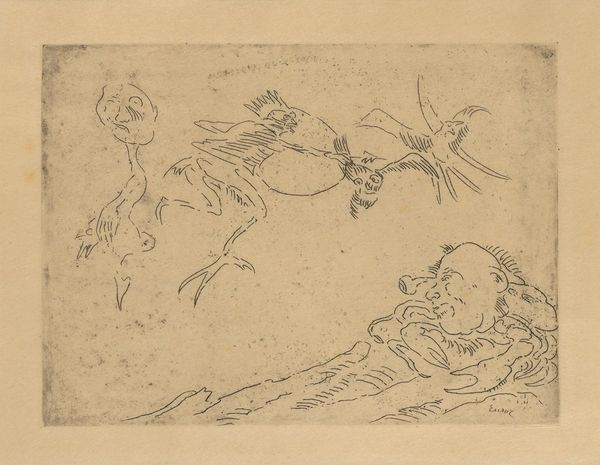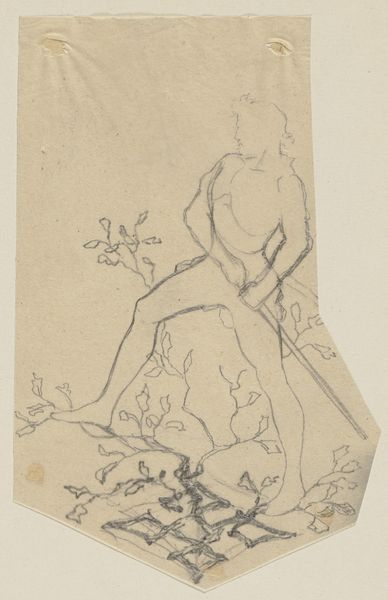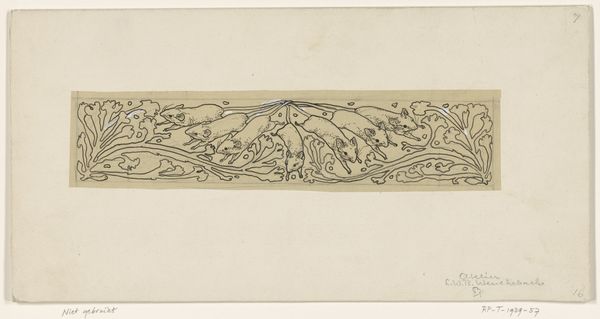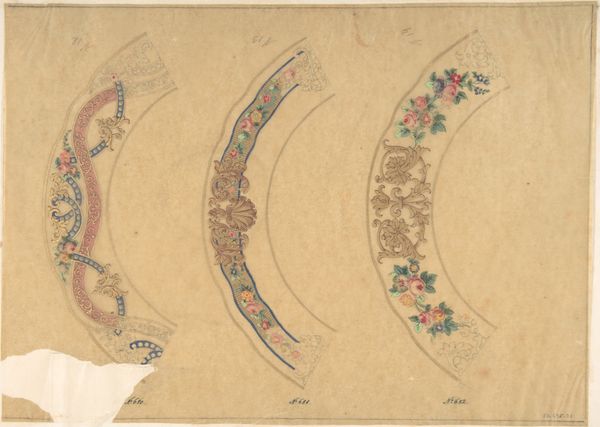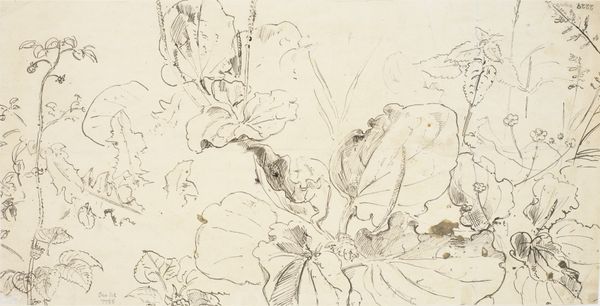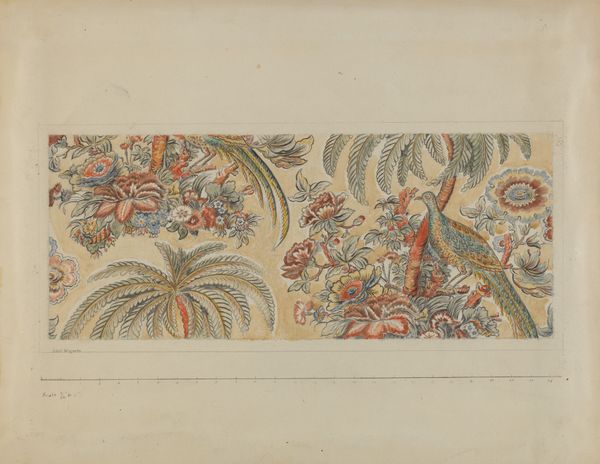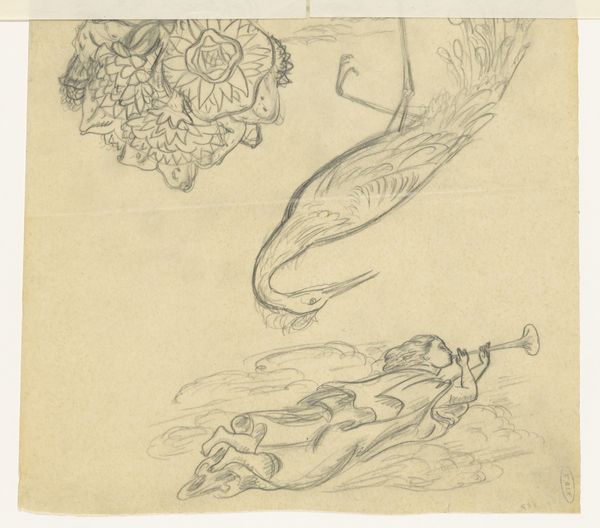
drawing, paper, ink
#
drawing
#
toned paper
#
light pencil work
#
pen sketch
#
incomplete sketchy
#
paper
#
form
#
personal sketchbook
#
ink
#
ink drawing experimentation
#
geometric
#
pen-ink sketch
#
line
#
pen work
#
sketchbook drawing
#
sketchbook art
Dimensions: height 75 mm, width 209 mm
Copyright: Rijks Museum: Open Domain
Curator: This is Henri Cameré's "Rectangular Field with Leaf Tendrils with Books and a Helmet," an ink and pencil drawing on paper, dating from approximately 1864 to 1894. The design is striking, quite ornamental. Editor: It really does look like something that would adorn the border of a page. It has a certain unfinished quality; it feels like we're seeing the artist working through ideas. What’s your take on it? Curator: My perspective immediately goes to its potential function and the cultural role such designs played in the late 19th century. The decorative arts experienced a significant shift with industrialization and the rise of mass production. Consider the context: Was Cameré reacting against or contributing to these changes? Was this intended for a printed book, wallpaper, or something else entirely? Editor: I hadn’t considered its function beyond its aesthetic qualities. Is the helmet a reference to anything specific? Curator: Perhaps to a classical ideal of knowledge and scholarship. The books combined with the helmet suggest a romanticized view of the intellectual life, maybe a longing for a past era of noble pursuits. What’s interesting is the integration of this highbrow symbolism within what feels like a draft, a piece that wasn't meant for public display. Editor: So you see it as commenting on the tension between these older ideals and the changes happening during the Industrial Revolution? Curator: Exactly. The unfinished quality could be a deliberate choice reflecting that very tension – a beautiful ideal struggling to find its place in a rapidly changing society. Does this change your perception? Editor: It does! I was initially just appreciating the aesthetics, but now I see a deeper cultural narrative. The drawing feels more intentional, more… weighted, with your explanation. Curator: And that’s the beauty of art history – revealing those hidden dialogues between the artwork and its context. Editor: Absolutely. I'll definitely look at other preliminary sketches with new eyes after this!
Comments
No comments
Be the first to comment and join the conversation on the ultimate creative platform.
